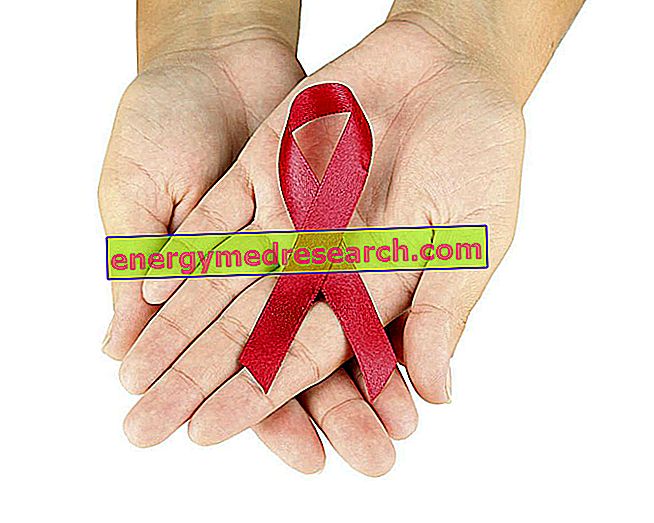Premise When we talk about " genital infections " we immediately refer to venereal diseases, that group of sexually acquired infections in which we witness an "exchange" of pathogens, be they bacteria, protozoa, viruses or fungi, between the two partners. Causes Genital infections affect a large portion of the sexually active population, both men and women; however, sexual contamination is not the only possible route of transmission, as genital infections can also be the expression of a promiscuous use of previously infected underwear, towels or sheets
Category sexually transmitted diseases
Premise When we talk about " genital infections " we immediately refer to venereal diseases, that group of sexually acquired infections in which we witness an "exchange" of pathogens, be they bacteria, protozoa, viruses or fungi, between the two partners. Causes Genital infections affect a large portion of the sexually active population, both men and women; however, sexual contamination is not the only possible route of transmission, as genital infections can also be the expression of a promiscuous use of previously infected underwear, towels or sheets
Important introduction Studied in a symptomatological key, numerous genital infections are marked by very similar symptoms, easily confused: for this reason, the recognition of the pathogen involved in the condition is not always so immediate. In addition to the generality of the prodromes, sometimes it is also added the difficulty, by the same patient, to identify with certainty the precise painful genital anatomical site, making the diagnosis clearly more complex
Introduction As thoroughly analyzed in the introductory article, the Papilloma Virus is the protagonist of negligible skin sores, such as warts, and, at the same time, is involved in the manifestation of terrible tumor lesions, such as those on the cervix. In this discussion, the focus will be on the mode of infection, the consequences and possible medical treatment aimed at removing the Papilloma virus
What's this ? The female condom (Femidom ®) is a mechanical contraceptive (or barrier) method which, when worn by the woman, allows the collection of semen inside a waterproof sheath inserted into the vagina and connected to two flexible rings placed at its ends. In this way, the female condom offers a double protection: Protects from unwanted pregnancies because direct contact between spermatozoa and egg cell is denied; Limit the transmission of venereal diseases such as gonorrhea, chlamydia, candidiasis, AIDS, condylomata acuminata, herpetic infections etc.
Contraceptive barrier The female condom - known as Femidom ® - is on the list of barrier contraceptives (non-hormonal). By preventing the contact between spermatozoon and egg cell, the female condom protects against unwanted and unexpected pregnancies. Furthermore, used correctly, this contraceptive tool protects both lovers from the transmission of venereal diseases.
Introduction The term " Treponema" indicates a genus of bacteria to which two different pathogenic species belong, Treponema pallidum and Treponema carateum , microorganisms involved respectively in the onset of syphilis and pint. Although most of the species belonging to the genus Treponema establish a form of commensal symbiosis with the host (resulting non-pathogenic), Treponema pallidum is distinguished by its characteristic virulence
Helicobacter pylori is a bacterium able to survive gastric acidity and to permanently colonize the mucous membrane of the stomach. During its life cycle, Helicobacter pylori produces substances, such as ammonia, with a strongly damaging action on the gastric mucosa. Not surprisingly, this bacterium is the main causative agent of peptic ulcer and chronic gastritis in humans, as well as significantly increasing the risk of gastric cancer in the case of chronic infection
Sexually transmitted diseases are caused by viruses, bacteria and protozoa that contract with vaginal, anal and oral relationships, not protected by a condom. These include papilloma virus infection, chlamydia, gonorrhea, herpes and syphilis. Sexually transmitted infections favor the acquisition and transmission of HIV , because during sexual intercourse the ulcerations and lesions of the genitals caused by other pathologies favor the entry into the organism of the virus responsible for AIDS
Let's start by specifying that the news is nicely written in a text called "University Medical Anniversaries, Volumes 221-222". It is more a finding than a pharmacological advice and, for the diseases in question, it is strongly suggested to refer to a doctor. Ramazzini, Mérat, Jourdan, Pollini, Cadet etc.
Chlamydia is an infectious disease caused by the bacterium Chlamydia trachomatis . This is a sexually transmitted disease, which often affects the vagina and penis, but the anus and oral cavity are not excluded. Chlamydia can also be transmitted via the maternal-fetal route. It is often asymptomatic or slightly perceptible










